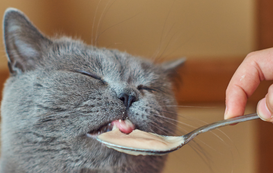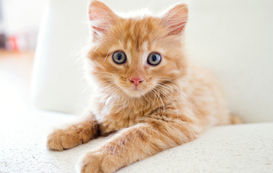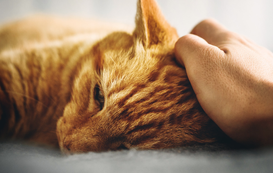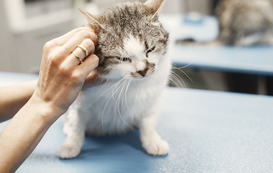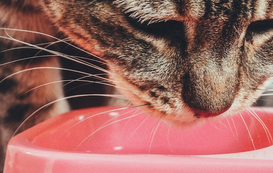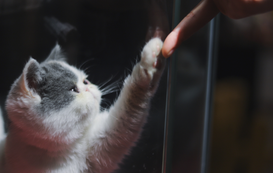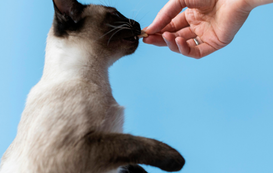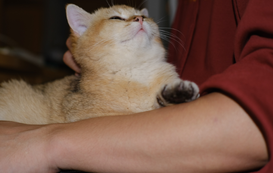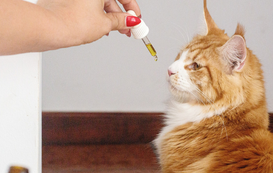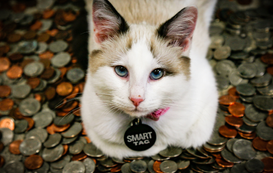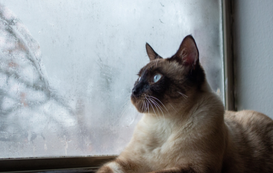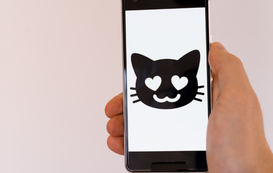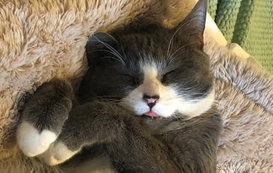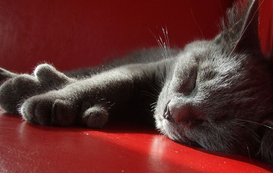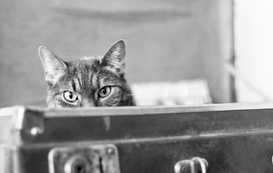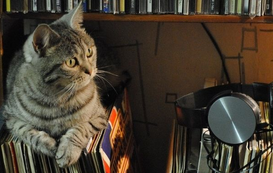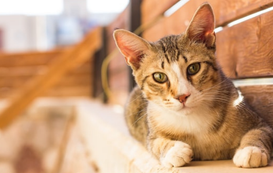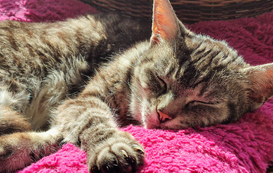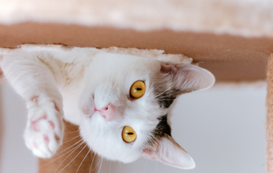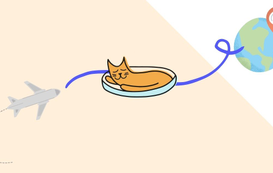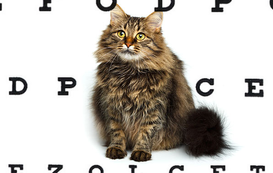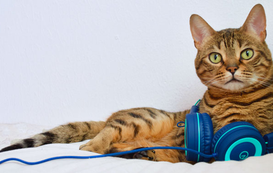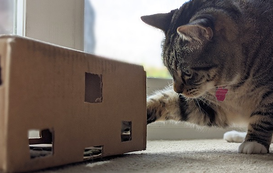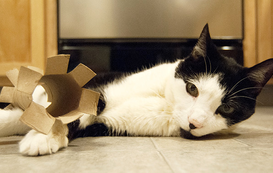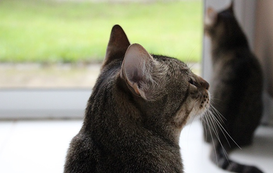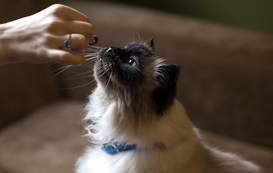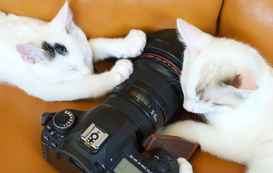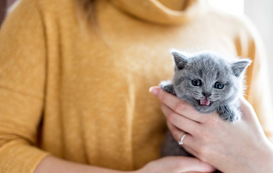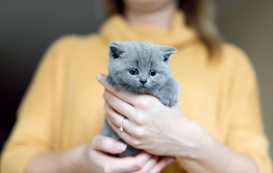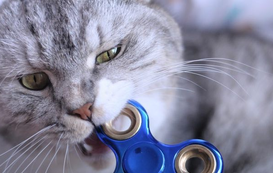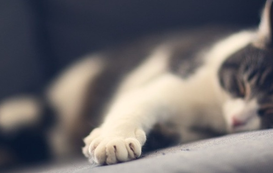- Home
- Cat Sitter Blog
- Cat Ownership
- Chip Your Pets Month: All About Microchipping Your Cat
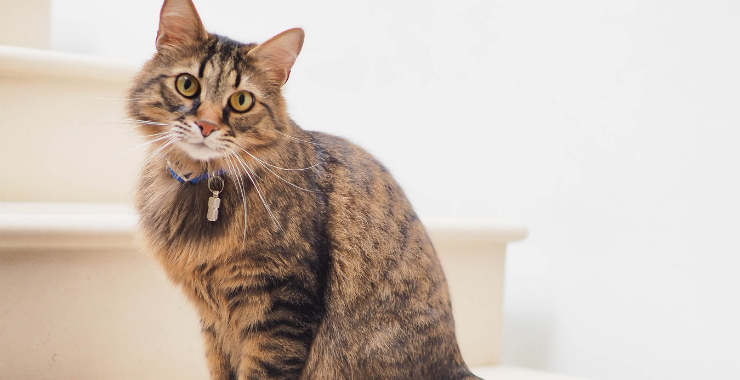

Popular posts
Chip Your Pets Month: All About Microchipping Your Cat
May is Chip Your Pet Month, making it a purrfect time to spread awareness around the importance of microchipping our kitties. Identification by microchip remains the best way for any owner to find their purrball if they get lost.
Sadly, thousands of pets go missing every year. According to American Humane, one in three pets will get lost or stolen during their lifetime. Yet, very few cats have microchip identification in the U.S., according to a study conducted by Lost Pet Research and Recovery in 2019.
Many cat owners aren't aware of microchipping as an identification method for their cats. So in celebration of Chip Your Pet Month, here are a few things you should know about microchipping your fluffball:
How does microchipping a cat work?
Microchips are radio-frequency identification transponders (RFID) passive devices. They stay dormant inside your kitty and will only transmit information when activated by a special scanner. So how does it all work? Microchipping your cat is a quick and, for the most part, painless procedure. It shouldn't hurt them more than a routine vaccination.
While microchipping doesn't require anesthesia, some owners choose to have their cats chipped when they get neutered. Your veterinarian will insert the rice-seed-sized chip in between your cat's shoulder blades with a needle. You will then need to register your cat's information with the microchip company.
Unlike GPS devices, microchips do not require a battery to function and last up to 25 years but have to be activated with a special scanner. Only veterinarians, animal shelters, protection associations, and other approved organizations possess these scanners, and only they can read the file on your cat's microchip.
Your cat's chip will hold a unique ID number assigned to your kitty and all your essential information. So once Fluffy has been microchipped, you must keep the information on the chip updated. Remember to let your registration agency know anytime you move or change your phone number.
How much does microchipping a cat cost?
Having your purrball chipped isn't as expensive as you might think. On average, microchipping your cat will cost a one-time fee of around $45 at your veterinarian's office. If you choose to take Fluffy to the Humane Society, it might even cost less.
Is microchipping dangerous for cats?
According to WebMD veterinary expert Sandy Eckstein, microchipping your cat is incredibly low-risk, but health complications are always a possibility since no two cats are the same.
While extremely rare, there have been some cases of tumor development around the area where the microchip was implanted. Again, the percentage is very low, but it is something kitty parents should keep in mind.
The benefits of microchipping your cat
While it is not mandatory by law, identification for your cat is critical and something to consider. If you have an indoor-only cat, you might think there is no point in microchipping them. However, there are several reasons why you should think about chipping Fluffy. So let's go over them:
Easier and safer identification
As kitty parents, one of our greatest fears is losing our furball. As careful as you can be, cats are escape masters, and they can easily slip out of the house and find themselves in the great outdoors.
Loud sounds or other stressful situations can also cause your fluffball to run away, such as fireworks during the 4th of July. Natural disasters and emergencies are also unpredictable scenarios where your cat might run away while in a panicked state.
The biggest reason for microchipping your kitty is finding them quickly if they run away or get lost. If your kitty has been microchipped, you have a higher chance of finding them. According to two experts at the VCA Hospitals, cats with microchips were "more than twenty times as likely to be reunited with their families."
An alternative identification method for cats is tattooing. While it is better than no identification, tattoo tags can be misread. Similarly, ID tags and collars can easily slip off. On the other hand, a microchip will be on your kitty and simply cannot be misread.
Helps animal shelters identify lost cats
Hundreds of lost kitties are brought into animal rescues every day. If a cat has been microchipped, the rescue can easily scan the chip and contact its owner right away. That frees up much-needed space in animal shelters and helps kitties return home faster. But unfortunately, shelters are more often than not at total capacity and unable to house any more animals.
Traveling abroad with your fluffball
Are you thinking of traveling with your cat? Or maybe you've decided to move to a whole new part of the world. Depending on your chosen destination, there are several regulations you need to take into account before booking your trip. Microchipping is one of them! For example, certain countries, such as the United Kingdom, have made microchipping pets mandatory.
Consider taking extra preventative measures
While microchipping is an excellent form of identification for cats, it shouldn't be the only precaution you take. Microchips can only be read with a special scanner by an authorized veterinarian or animal rescue. So it will be hard for, let's say, your next-door neighbor to identify you as the owner. Another thing to remember is that microchips do not have GPS capabilities, so you will be unable to track your lost cat in real-time.
Microchips are an extra layer of protection when finding your lost cat and a good backup option for identifying them. If you're opting for an ID collar, get one with a breakaway clasp to prevent accidental choking. But if you want to be extra sure, consider investing in a GPS tracker for Fluffy or using a simple ID tag.
Photo by: Alexander London on Unsplash


